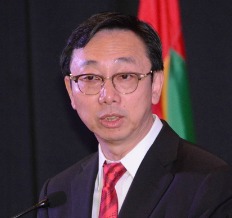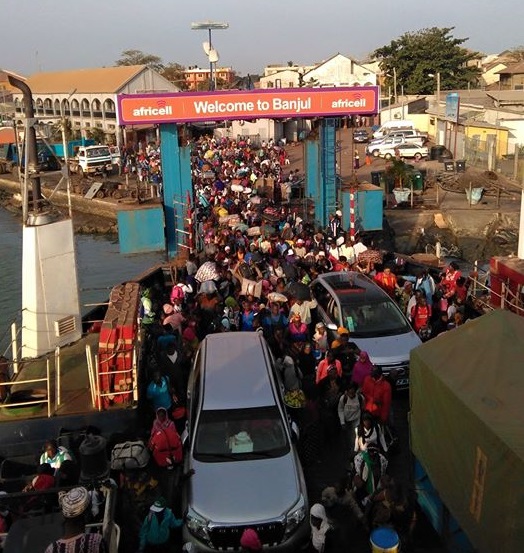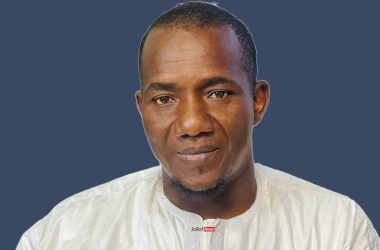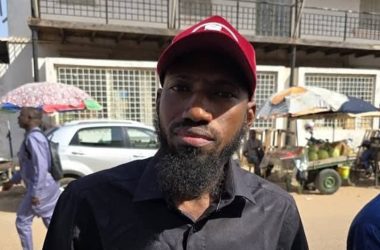
Let me first set the stage by offering a quick overview of the economic setting in sub-Saharan Africa and The Gambia. As you know, the region has benefited from solid growth over the past two decades. But the past four years have proven more challenging. We have witnessed a divergence of economic fortunes—with diversified, well managed economies continuing to grow and many resource-dependent countries encountering difficulties.
While this pattern has continued recently, we are seeing regional growth regain some momentum. The International Monetary Fund (IMF) estimates that growth in sub-Saharan Africa should accelerate this year to 3.5 percent from 3 percent in 2018. We expect it to expand at close to 4 percent over the medium term. This is good news.
We are very pleased to see that the Gambian economy has rebounded strongly. Growth in 2018 reached 6.6 percent and prospects for sustained growth are positive over the medium term. Inflation has dropped to just above 6 percent, and gross official reserves have increased to about 3 months of imports. This remarkable progress has been achieved through your government’s efforts to stabilize the economy with support from Gambians living abroad, the private sector, and international partners.
There also has been progress in developing infrastructure, which is crucial to ensuring sustained growth. The recently opened Senegambia Bridge, which I am going to visit later today, is a prime example of this progress. It is a symbol of The Gambia’s efforts to deepen economic ties to the rest of the region.
The bridge is also a good segue to the theme of my speech: The Gambia’s pathway to prosperity. As a road, it is a pathway in the literal sense. But it is also a pathway in figurative sense, symbolizing the role of enhanced trade and connectivity in building prosperity. At the same time, domestic policy efforts will be needed to build this pathway.
Enhanced trade is one pillar of the pathway to prosperity. Africa is now moving ahead with creating the Continental Free Trade Area, which The Gambia recently endorsed. This initiative has the potential to boost intra-African trade and growth across many dimensions. It can add jobs, foster competition, help increase investment, and spur the spread of knowledge and technology.[1] All of which could provide significant benefits to The Gambia.
The agreement itself, however, is but one step. To fully benefit from it, the significant nontariff bottlenecks to trade that exist across the region will also need to be tackled. These include infrastructure shortcomings, logistical costs, and other hurdles that hinder cross-border trade.
If these issues are addressed, regional trade integration can help maximize the returns on important public investment, such as the Senegambia bridge, and consolidate the recent pick-up in private sector activity and lending that is integral to sustainable development in The Gambia. On this point, it is important to note that this private sector-led growth needs to be supported through responsible lending by financial institutions to Gambian businesses large and small. Vigilant supervision of banks and other credit institutions will help to ensure financial stability in the face of growing private capital inflows.
Trade integration will also help frame the reforms of this country’s state-owned enterprises. In many cases, the long-term viability of those companies will depend on increasing their regional orientation.
Take the example of the energy sector. The stabilization of electricity output has contributed to your country’s stronger growth. So, the ongoing investment in the electricity transmission not only will link the Eastern and Northern parts of the country, it will also open doors to West Africa’s power networks by enabling cross-border energy trading, including under the flagship OMVG project uniting The Gambia, Guinea Conakry, Senegal, and Guinea Bissau with the aim of harnessing the water resources of The Gambia River Basin to produce low-cost renewable energy for the member countries.
In the same vein, investment to upgrade the port of Banjul could create a new trans-shipment hub for the region. Seen in this context, the Senegambia Bridge could be just one step in the development of the Trans-Gambia corridor within Economic Community of West African States (ECOWAS).
Regional integration and cooperation are particularly important for improving the structure of the economy and enhancing competitiveness. Let me offer two examples:
First, agriculture could be an important contributor to The Gambia’s pathway to prosperity. Regional trade integration and improved infrastructure will be key to growing this important sector of the economy.
On Sunday, I visited Radville Farms, outside Banjul and their processing plant and transit facility near Yundum airport. It was great to see how automation and advanced irrigation techniques are helping to produce high-value and high-yielding crops, boosting exports, and providing high-value employment for many skilled workers, especially women.
In the future, weather tracking, satellite imaging and other sophisticated technological solutions (including artificial intelligence) will be needed to modernize agriculture. They will help to create a farming sector that is more environmentally attuned and resilient to climatic shocks. This is especially important for small and fragile ecosystems like The Gambia’s. Agriculture will then be better able to meet national goals of food self-sufficiency and creation of new export markets.
Second, tourism and other services also remain essential to your future. Regarding tourism, it is great to see The Gambia attracting record numbers of visitors. New hotels, roads, and other amenities will attract more tourists and will help rebrand your country’s tourism offerings, including by branching out into eco-tourism and water sports. The ongoing expansion of transport infrastructure will facilitate tourism, including better connections to the region. These connections, importantly, will also allow goods to move around the region and help develop trade-related services, including re-exports.
Regional economic integration and cooperation will also strengthen The Gambia’s external position. Exports, private capital inflows, and remittances from Gambians working abroad are rebounding and are likely to increase further with regional integration. This will help build foreign exchange reserves and strengthen confidence in the Dalasi.
So, there are grounds for optimism about the economic outlook. The gains we are witnessing will support your efforts to improve the quality of life for all Gambians. We are already seeing progress in the reduction of maternal and infant mortality rates, and so much more is envisaged under the National Development Plan.
This highlights that, beyond regional integration, there are other important areas of reform to move The Gambia along the pathway to prosperity, which are also key for achieving the Sustainable Development Goals. I would like to highlight three areas:
First, unlocking financial support from donors is one critical challenge. This can be addressed by resolving The Gambia’s unsustainable public debt situation. In this regard, I am pleased to report that at a recent roundtable meeting in Washington, D.C., most creditors indicated support for debt relief. Your government and its advisors are following up on this development.
Second, fostering inclusive growth and addressing social needs is another priority. This means attacking poverty through programs aimed at aiding vulnerable households and creating jobs for unemployed youth. By lowering debt service costs, debt relief can also create budget room to address these needs as well as other budget priorities, including the reform of state-owned enterprises.
Third, strengthening the rule of law and increasing accountability and transparency will also be crucial steps toward sustainable growth. The Janneh Commission revealed the extent of financial mismanagement and misappropriation during the previous regime. More focused efforts will be needed to recover stolen domestic and foreign assets.
The IMF joins the rest of the international community in applauding the governments’ commitment to transitional justice reform through the work of the Commission of Enquiry and the Truth, Reconciliation and Reparations Commission, and the recently established National Human Rights Commission. We also note the plans to establish an Anti-Corruption Commission.
We also join the international community in support of the security sector reforms, which are essential for modernizing the state and strengthening the rule of law.
To conclude, I would like to discuss the role of the IMF.
The Fund provided emergency support in 2017 and is continuing our engagement through a Staff-Monitored Program. In the future we may be able to move to a medium-term program with concessional financing.
In addition, along with international partners and supporting countries, the IMF is strongly committed to helping The Gambia strengthen key institutions, including by providing our technical expertise and training.
It is essential that the assistance of the international community, including the IMF, is closely linked to your country’s development priorities. Please be assured that we stand ready to listen to your ideas and proposals—and to provide all the help we can.
We look forward to working with you as you proceed along your pathway to prosperity.
By Tao Zhang, IMF Deputy Managing Director






The usual Keynesian capitalist economic diatribe that will never salvage Africa much more The Gambia from poverty and “sustained underdevelopment”. Again the presence and role of the imperialist institution; the IMF, can be ostensibly noted. This clearly shows, that we can never make any headway with our own curriculum of “development economics” with foreign intrusion.
I will find time and space to respond to that child of a bitch and hound, Natty Dread, that I have been looking forward to. Let nobody admonish Babu, ’cause I’ve not heard a word from anyone to advise that BASTARD, Natty Dread.